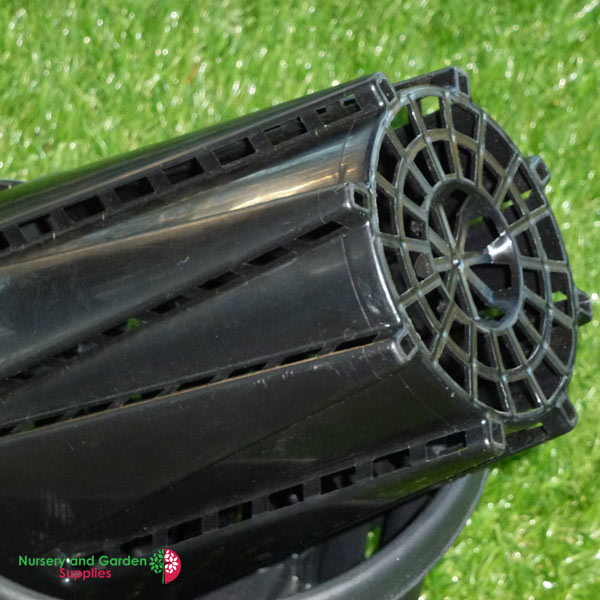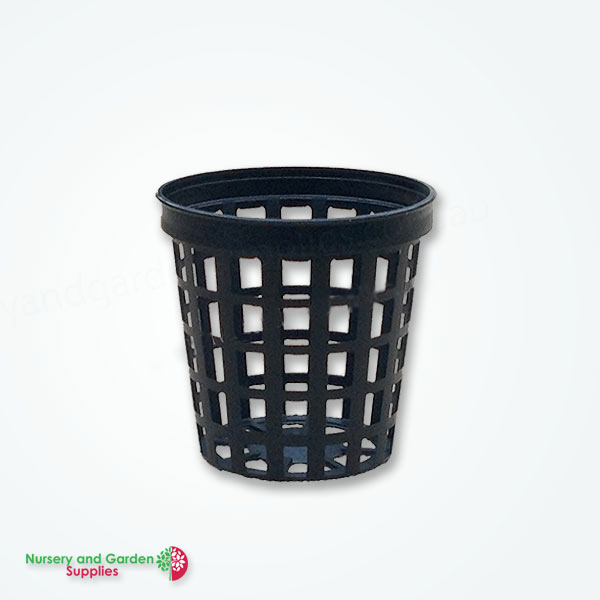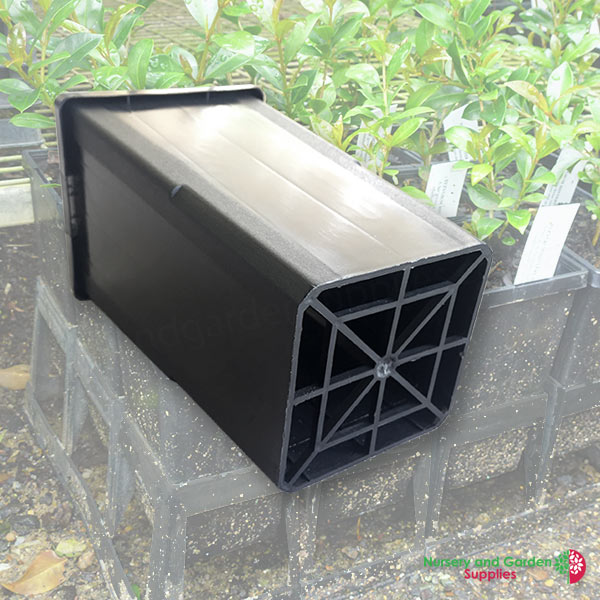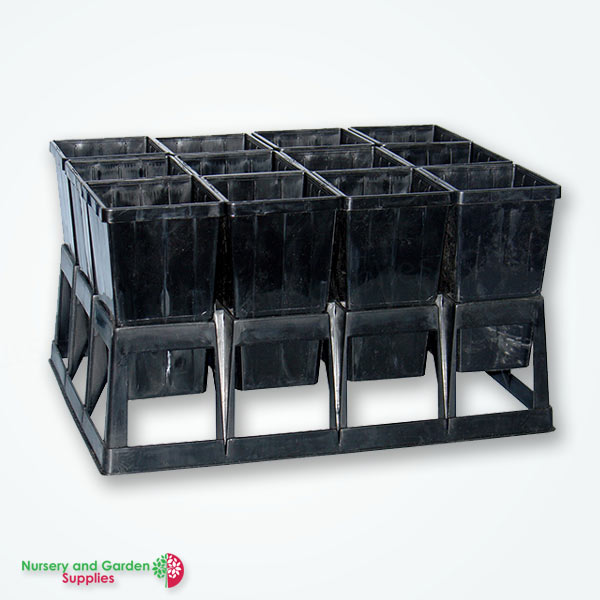Plants need healthy roots to grow well, but sometimes the roots can get all tangled up and stressed out in regular pots or planter bag.
When a plant’s root tips encounter air instead of being enclosed in a container or wrapped in soil, they respond by sending out lateral roots in search of moisture and nutrients. These lateral roots then grow in a more fibrous and branching pattern, creating a dense network of roots. The constant exposure to air triggers the roots to undergo a process called “air pruning.” Air pruning stops the roots from growing around in circles which can cause the plant to become ‘root-bound’, leading to decreased nutrient uptake and limited water absorption. Eventually, it can lead to stunted growth and reduced overall plant health.
Air Pruning Pots are a great way of growing healthier roots – some are known as anti-spiral pots, others are known as open mesh base pots.
Air pruning is a technique used in horticulture to encourage the growth of fibrous, dense root systems in plants. It involves exposing the roots to air, which stimulates the development of secondary roots and prevents the formation of circling or girdling roots. This process promotes healthier and more vigorous plant growth.
When a plant’s root tips encounter air instead of being enclosed in a container or wrapped in soil, they respond by sending out lateral roots in search of moisture and nutrients. These lateral roots then grow in a more fibrous and branching pattern, creating a dense network of roots. The constant exposure to air triggers the roots to undergo a process called “air pruning.”


Air pruning occurs when the growing root tip is exposed to air, leading to the formation of root hairs that absorb water and nutrients. At the same time, the root tip also releases ethylene, a hormone that inhibits the growth of lateral roots from that point. As a result, the root tip stops growing and starts to develop numerous side branches or root hairs.
Some plants like Orchids will thrive in an Air Pruning pot filled with loose mix. Orchids are actually classed as an epiphyte, who’s root system is happy to be exposed to the air and collect water, nutrients, and minerals from whatever the roots come in contact with.
Air pruning pots are special plant growing containers. There are 2 main forms of these pots;
1. The first type are pots that have many gaps and holes all up and down the sides as well as the bottom. They also have vertical corrugated sides which interrupts the roots as they look to start circling the pot.
2. The second type has a very open mesh base and have been designed to to sit in Air-pruning crates. The pots sit or ‘hang’ up off the ground allowing airflow to easily travel underneath the pots.
The air makes contact with the roots when they start to grow through through the sides. When roots grow towards the edges of the pot, they get a breath of fresh air and are pruned. With the proper use of propagation supplies, this encourages the growth of new, sideways roots which help the plant grow stronger and healthier. CLICK HERE to view Air Pruning Pots and Tubes.


Using air pruning pots can have many benefits to the development of the root system. Because the roots grow in a nice, dense pattern, they can be transplanted more easily without getting damaged as easily. And when trees are transplanted, they grow quicker because their roots are already strong and healthy. Often Fruiting plants will have better yields. Many Australian Local Councils will ask for trees grown in these pots because the root system is stronger, healthier and does not have the dreaded ‘J-root’ (where the tap-root grows in a bent shape, weakening the tree).
They’re also great for hydroponic systems because they let air get to the roots – and this is also why smaller versions are often used for growing orchids.
Anti Spiral Pots come in a few designs and many sizes, from little pots for baby plants to big ones for trees and bushes. They all work by letting air flow through the sides of the pot to make the roots grow healthy and strong.
In short, air pruning pots can help the roots grow in a more healthy pattern and can make transplanting easier both for you and for the plant. If you’re a gardener or a plant-lover, you should definitely check them out! Healthy gardens to you all.








